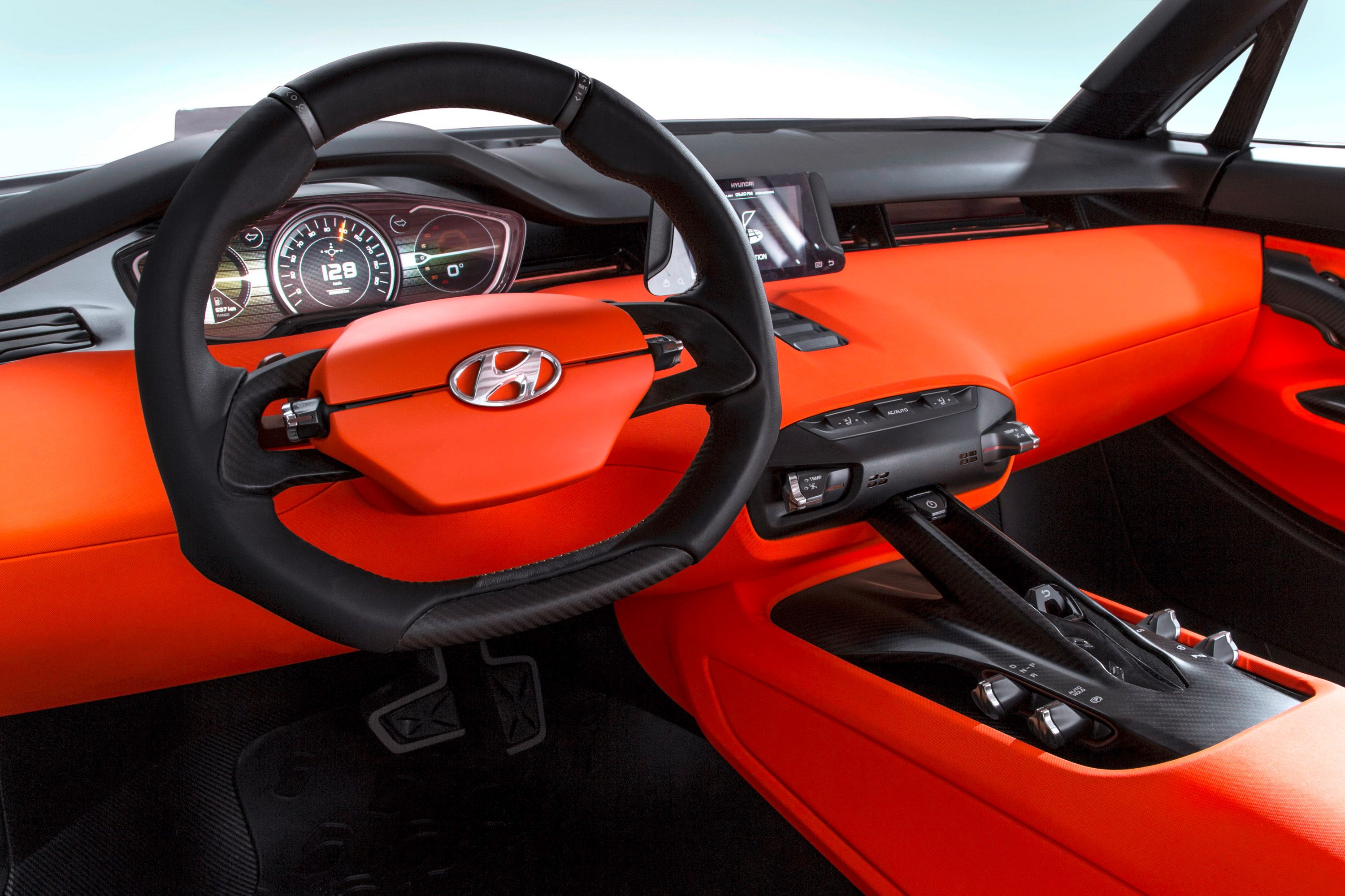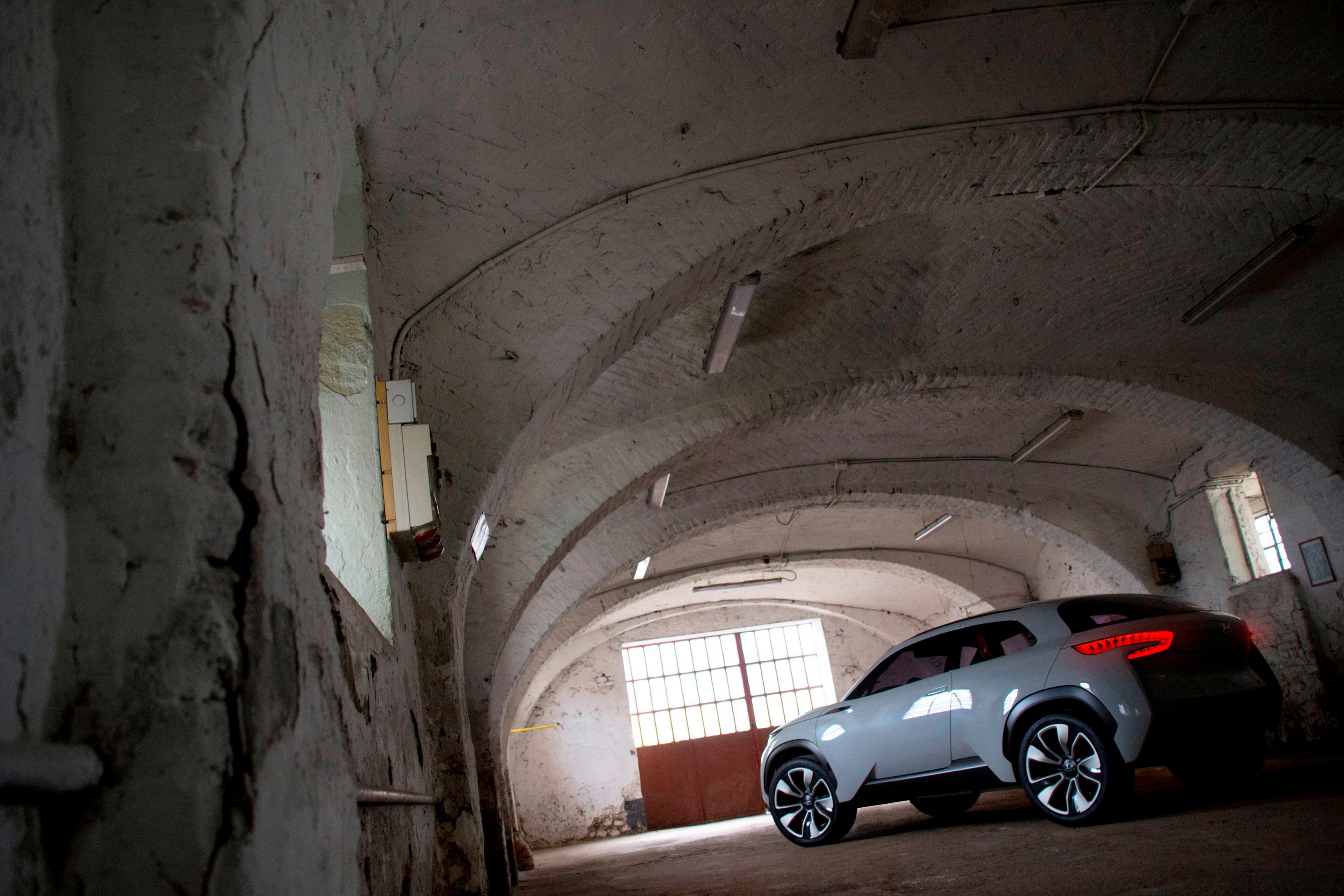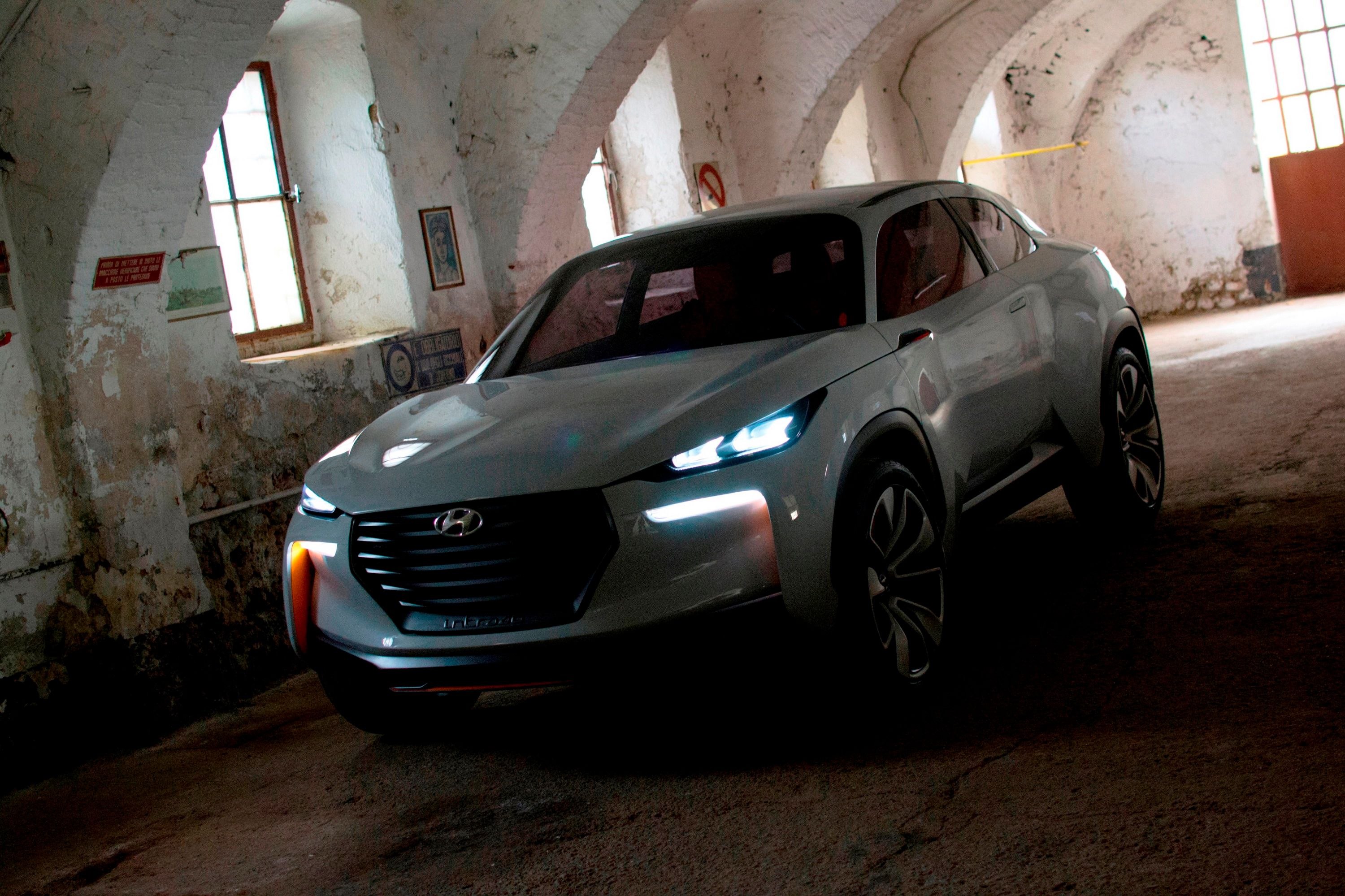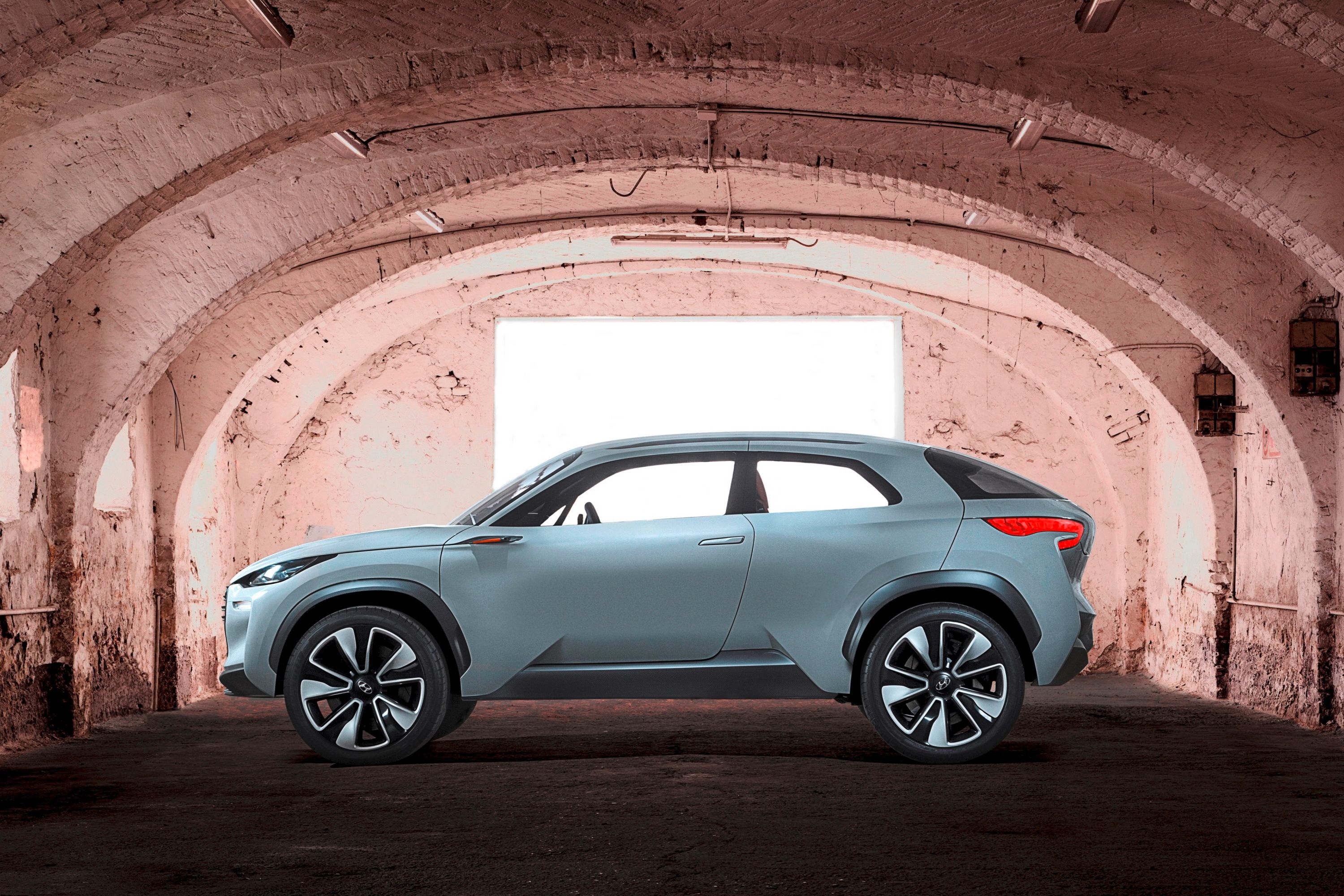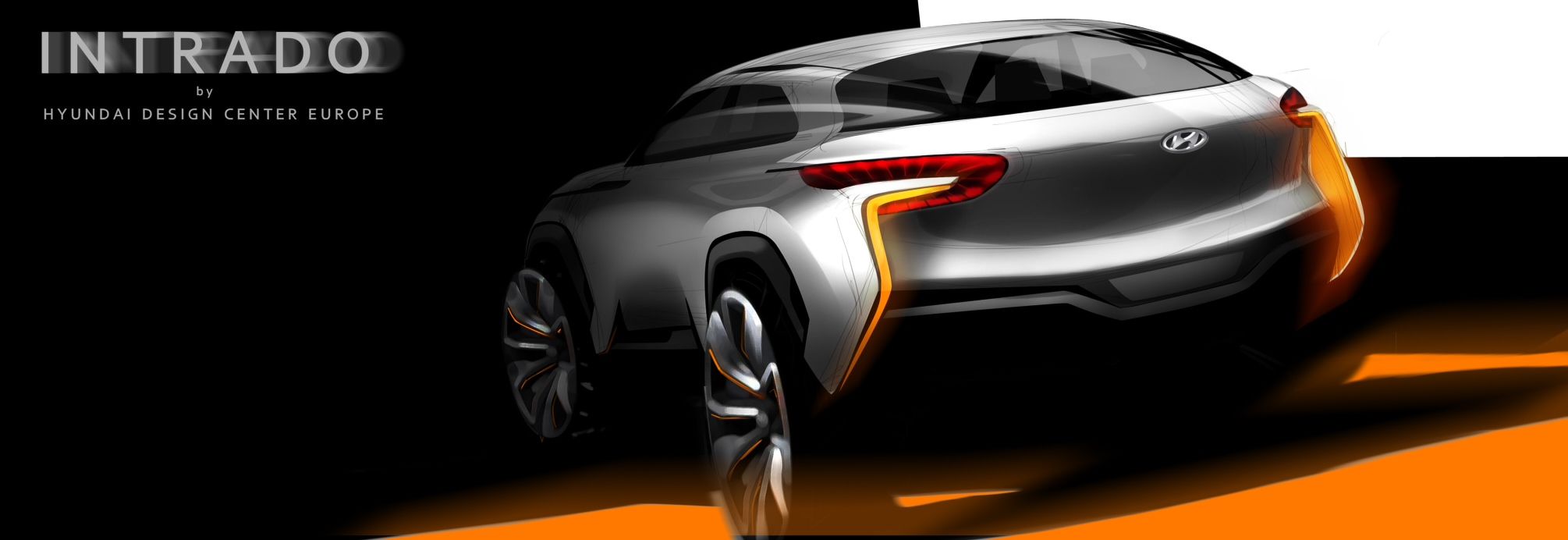The 2014 Geneva Motor Show->ke228 is coming up next week and it looks like Hyundai->ke201 is ready to make its first appearance there with the compact SUV->ke145 called the Intrado Concept.
The new Intrado concept->ke169 is the first vehicle developed by the company, using the new "Fluidic Sculpture 2.0" design language, and it is the brainchild of a European design team supervised by Peter Schreyer.
The name "Intrado" is taken from the arch on the underside of an airplane’s wing that provides the lift needed for flight. As no surprise, this concept draws plenty of inspiration from the aircraft world, like its advanced materials that help ensure a low curb weight.
The concept features a super-lightweight structure made from a mixture of advanced materials and will use a smaller, lighter and improved version of the hydrogen fuel cell found in the Hyundai ix35 Fuel Cell .
Full details on the Hyundai Intrado Concept will be unveiled during its official debut in Geneva.
Click past the jump to read more about the Hyundai Intado Concept.
2014 Hyundai Intrado Concept
- Make: Array
- Model: 2014 Hyundai Intrado Concept
- [do not use] Vehicle Model: Array
Exterior
To say the exterior design of the Intrado is bold would be an understatement. The high-riding crossover shares a similar grille to the upcoming 2015 Genesis sedan but is flanked by aggressive vertical air scoops with horizontal LED running lights running along their top. The LED headlights give off a menacing sliver of light that would scare any small child. Around the Intrado’s side, deeply scalloped fenders crease into the rocker panel and door to form a unique and interesting intersection of lines.
Out back the lines are no less unique. A bulging rear tailgate rolls into the lower fascia which is bookended by similar aero features found up front. The LED taillights have a sharply curved angle that’s reminiscent of a shark’s mouth – at least from a rear three-quarter view.
Weight reduction is a central theme running through the Intrado Concept. Extensive uses of carbon fiber and lightweight steel within the structure help make the most of its hydrogen fuel-cell powertrain. Hyundai calls the overall design minimalistic with “no unnecessary adornments” for a very clean look. The body panels are also said to be easily and cost-effectively replaced in the event of damage due to their lightweight steel construction.
Interior
Uniqueness continues inside with a very concept-like design. The instrument cluster and infotainment screen are quite futuristic while the dashboard looks like one large chunk of molded orange plastic with the steering column seemingly not changing the dashboard’s flow. A minimalistic style of switchgear inhabits the center console and flat-bottomed steering wheel. A bridge-like piece connects the lower center console and horizontal dashboard and appears to house the transmission controls.
The heavy use of carbon fiber within the Intrado’s structure is highlighted within the cabin as well. Opening the doors, hood, or tailgate reveals the uncovered carbon fiber patterns in the bodywork. “See through” air vents carry the visibility theme onto the dash as well.
Drivetrain
The most news worthy aspect of the Intrado is its hydrogen fuel-cell powerplant. The system is paired with a 36 kWh Li-ion battery that that helps push the crossover’s driving range to 372 miles. Refueling only takes a few minutes and emissions are nothing more than pure water. Hyundai says the new hydrogen fuel-cell and Li-ion battery system promises a better driving dynamic and added responsiveness over previous fuel-cell systems.
Not much else is known about the system at this point. Hyundai will assuredly release more technical details and specs once the Intrado Concept goes on display at Geneva->ke228.
|
Drivetrain type |
Hydrogen fuel-cell powertrain |
|
Battery |
Li-ion 36 kWh |
|
Driving range |
600 kilometers (372 miles) |
|
Emissions |
Only water |
Prices
Since the Intrado is still in the concept phase, there’s no word on pricing. There are rumblings, however, about Hyundai bringing its ix35 Fuel Cell Tucson’s hydrogen powerplant to the U.S., and they may use the Intrado to accomplish that goal. Currently, the ix35 Tucson is available for lease in a few European countries for the equivalent of $3,000 down and $499 a month. Perhaps, the Intrado will stick close to that pricing structure if/when it ever comes Stateside.
Competition
Like the Intrado, Toyota’s FCV Concept is a hydrogen fuel-cell vehicle. It made its debut last year at the 2013 Tokyo Motor Show and caused quite a stir with its advertised 310-mile range. Its power comes from two 70 MPa high-pressure fuel stacks that have a power density of 3 kW/L and a minimum output of 100 kW. Do the math and that’s about 134 horsepower.
Not much is known about if or when the FCV will make it into production, but with the onslaught of other alternative fueled vehicles making their debut, we wouldn’t be surprised if Toyota took the leap forward.
The BMW i3 goes about being green a completely different way. Instead of hydrogen, the i3 uses an electric motor and batteries to power its way through town. If longer sprints on the open road are expected, BMW shoppers can by the range-extender version with a small onboard internal combustion engine that will push the normally short-range car up to 180 miles before needing refueling. Non-range-extender models will travel81 to 99 miles on a single charge.
Pricing for the i3 starts at $41,350 for a battery-only example. Bumping up the range-extender model raises the price to $45,200. Sales will begin within the U.S. in the second quarter of this year – meaning it’s only a few months out – and will be classified a 2015 model.
Conclusion
There’s a lot to like about Hyundai’s Intrado Concept - from its extensive use of carbon fiber and lightweight steel to keep weight down and strength up, to its bold, unique designs both inside and out. Experiments like this ultimately helps the auto industry conquer the looming CAFÉ standards by supplying engineers with a test bed for future modes of powering our everyday vehicles.
Even without the innovated powertrain, the Intrado’s interior and exterior designs are something to be remembered if not copied in other Hyundai products.


